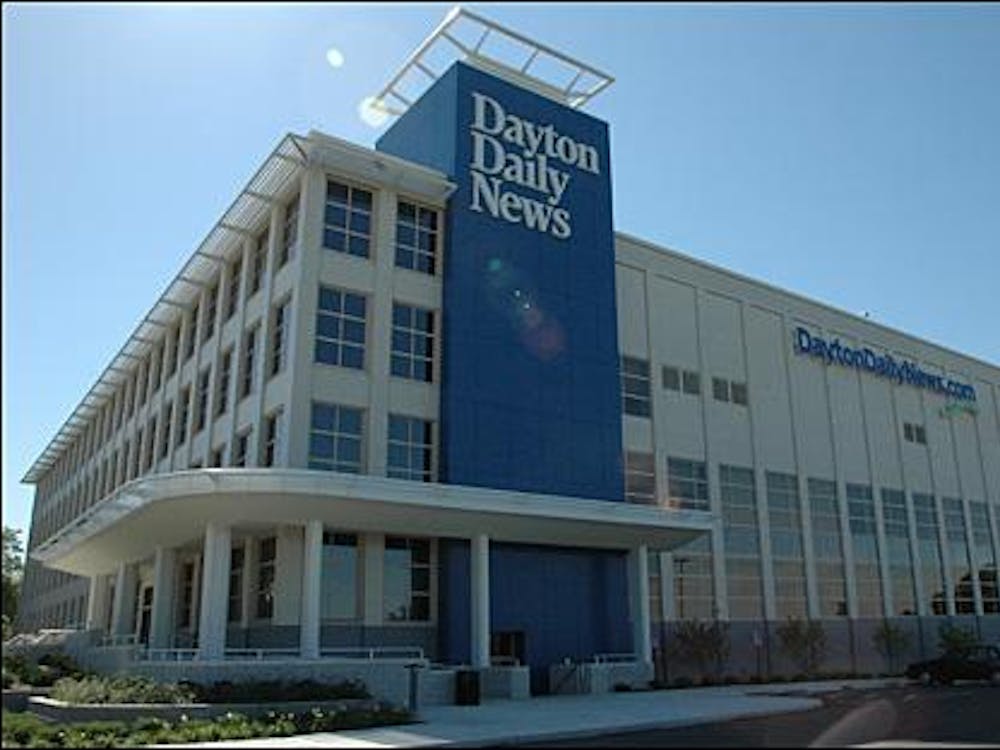The following reflects the majority view of the Editorial Board of The Miami Student
At Miami, we pride ourselves on our ideal of "Love and Honor."
This phrase has become synonymous with our university. It is printed on t-shirts and string bags handed out at the admissions office. It is used by alumni to greet each other and it is painted on the walls of Armstrong.
However, if you take a trip down to the basement of King Library and flip through Miami's yearbooks, you will witness a history which is the exact opposite of "Love and Honor."
In these pages of Miami University history are overt, disgusting and horrifying examples of hatred and bigotry. Pure hatred by ignorant, privileged college students.
What we found in more than 50 copies of Recensio, Miami's former yearbook publication, were photographs of blackface, mock lynchings, students dressed as Confederate soldiers, displays of the Confederate flag and photos of students dressed in Middle Eastern garments at "Arabian Nights" parties. In one photo, multiple members of the Delta Kappa Epsilon fraternity salute a Nazi military flag.
This is the reality of racism and hatred on our campus, and it is documented in books meant to highlight the better aspects of our history.
Racism and hatred extend far beyond photos of blackface and mock lynchings in our yearbooks. Hatred has lived in this university, and in many universities like it, for a long time. That hate has taken the shape of offensive symbols, foul language and even violence.
Until 1997, Miami's sports teams were known as the "Redskins."The decision to change the team name to "RedHawks" was met with racist backlash. Recensio coverage of the change was headlined, "Goodbye Redskins, Hello Redhawks (yuck)."
And in 2004, a picture in Recensio showed a student at a football game imitating a Native American by wearing a headdress and face paint.
Hate at Miami has also been directed toward members of the LGBTQ community. The 2004 issue of Recensio claims Miami was "ranked fifth worst out of 351 other colleges and universities at which to be GLBTQ." This statistic, printed along with an article about the university's attempts to become more inclusive toward the LGBTQ community.
In 2010, junior Ben Collings was attacked while attending a drag show with his boyfriend. He was beaten in the bathroom at the show by two students who used a derogatory word to describe gay people, saying "[expletives] do not belong in society." Collings survived, but suffered significant facial injuries.
Enjoy what you're reading?
Signup for our newsletter
Last year, hate again took form on campus , after students were caught using racial slurs on social media and a video surfaced of members of the Delta Zeta sorority using the n-word. These incidents led to the formation of the second Black Action Movement (BAM 2.0). However, even though the university met with members of BAM, a year later, many of BAM 2.0's demands have not been met.
The history of hate at Miami is long and vast, but action can be taken to keep hate out of our future. A good place to start would be for the university to apologize and recognize that these issues of hate continue today.
But an apology rings hollow without real, substantive action. We have to promote and foster an environment of inclusivity on this campus. Recognizing the past is important, but it is merely a starting point to solving this decades-long problem.
This healing process starts at the admissions and recruiting office, where the university must recruit people of different backgrounds, races, gender identities, sexual orientations and faiths. Miami ranked 19th for "little race/class interaction" out of 384 colleges in the 2019 issue of the Princeton Review. The only way to foster an environment of inclusivity is by bringing different kinds of people to campus, where they can interact with each other and expand their worldviews.
We can preach about diversity in our classrooms and at lectures, but until students are able to interact with people different from themselves, true diversity will never be achieved.
Individual student organizations need to step up and take responsibility for their past and work toward bettering themselves. This starts with diversifying their members, but even simpler actions can be taken to solve this problem. An easy change is to be more conscious of party themes.
Themes such as "Arabian Nights" caricature other cultures and have no place in an environment that preaches "Love and Honor."
If you see someone on Halloween wearing blackface or dressed as a Native American, do not let them into your party. Most fraternities do not have an issue denying entrance to their parties anyway, so why not expand that to include people dressed in offensive costumes?
There are a lot of actions we as individuals can take to stop this history of hate from repeating itself. But until students and the university hold themselves accountable, our history will remain our present.



